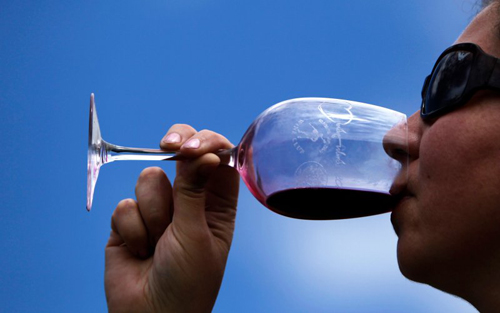
By Jordan Salcito
You wouldn’t have thought but just a few hours from Sochi one of the world’s great wine regions is starting to produce seriously good juice again. Jordan Salcito on the Georgian wine revival.
The Republic of Georgia is a mere 260 miles south of Sochi, along the Black Sea. That’s slightly longer than the distance from New York to Boston – a stone’s throw, especially by Russian standards. Despite the proximity, Olympians and Sochi tourists are unlikely to be drinking much Georgian wine this winter. Until last year, they couldn’t even buy it, under a seven-year Russian ban on Georgian wines.
Georgia’s wine industry has taken some rough blows. Phylloxera struck in the late 19th century, and in the 20th century, Soviet winemaking mandates encouraged quantity above quality. Gorbachev’s anti-alcohol campaign in the late 1980s obliterated a great deal of vineyard area (though, as Jancis Robinson notes in The Oxford Companion to Wine, mainly state vineyards suffered as “no Georgian farmer would be willing to pull out his own vines”). In 2006, Russia imposed an embargo on Georgian agricultural products, including wine. Russia’s chief health inspector, Gennady Onishchenko, claimed they were contaminated with heavy metals and pesticides. Until the embargo, Russia purchased roughly more than 80% of Georgia’s wine production.
The embargo may have proved a blessing in disguise. Georgia cultivated export markets in Belarus, Azerbaijan, the Ukraine, China, the United States, and even France, educating consumers and wine-makers about Georgian wines, grapes, and practices. Now the wine cognoscenti are beginning to take notice of what’s coming out of Georgia. Wine critic Alice Feiring, a fervent advocate for Georgian wines and wine culture, is now writing a book called Skin Contact about the country’s vinous history and traditions. In June 2013, Russia lifted the embargo and Georgia resumed wine exports to Russia for the first time since 2006.
But Georgia has been a center for wine before. The Republic is home to the world’s most ancient wine region. The world’s widely cultivated vitis vinifera vine is believed to have originated here, sprung from the wild vitis vinifera silvestris whose roots can be traced back one million years.
Viticulture still holds a prominent role in its ethos, and many of today’s vineyards and traditions date back more than 7,000 years. Robinson describes this as a “national reverence for wine.” More than 500 indigenous grape varieties are still vinified, and the country’s most notable estates don’t seem particularly tempted by international varieties like chardonnay, even though it is legally allowed. Many wineries employ the same winemaking techniques that existed thousands of years ago, fermenting wines in large beeswax-lined clay pots called quevri, then burying them underground.
Now, iconic winemakers in Beaujolais, the Loire, and even Italy have placed quevri orders and are starting to experiment with the 7,000 year-old technology.
According to The Oxford Companion to Wine, archaeologists have unearthed petrified grape pips dating back to the Neolithic era and have even exposed raisins and grape seeds reminiscent of varieties still cultivated today. Excavations of the ancient Teishebaini fortress, which dates back to the 10th century BC, exposed ancient cellars and entire processing chains, from the irrigation canals to the large clay storage jugs known as karas. This sort of history is hard to imagine in the United States. To add some perspective: settlers planted the first grapes in Oregon in 1847. Pinot Noir didn’t grow in the state until 1961.
One winery making a serious impact is called Pheasant’s Tears, a project founded by John Wurdeman (who landed in Georgia by way of Maryland and Moscow) and Georgia native Gela Patalishvili. The pair presented their citrusy, hazelnut-scented wines at the annual Dive Bouteille wine fair in Angers, in the Loire, catching the imagination of winemaker/importer Thierry Puzelat. Puzelat decided to import the wines into France, organized a Georgian Wine tasting in Paris for Pheasant’s Tears and other wineries, and the rest is history. Now, iconic winemakers in Beaujolais, the Loire, and even Italy have placed quevri orders and are starting to experiment with the 7,000 year-old technology.
Georgia’s efforts to reach the world market are impressive. The growers are passionate, dedicated, and united in their front to preserve traditional practices and compete on a global level. Their efforts are finally paying off. While Olympians and their fans may not be drinking Georgian wines this week, it’s hard not to draw a connection between these athletes and winemakers. They both set high bars and pursue global ambitions. And Georgian wines have become the indisputable gold standard of the region.
©thedailybeast.com






